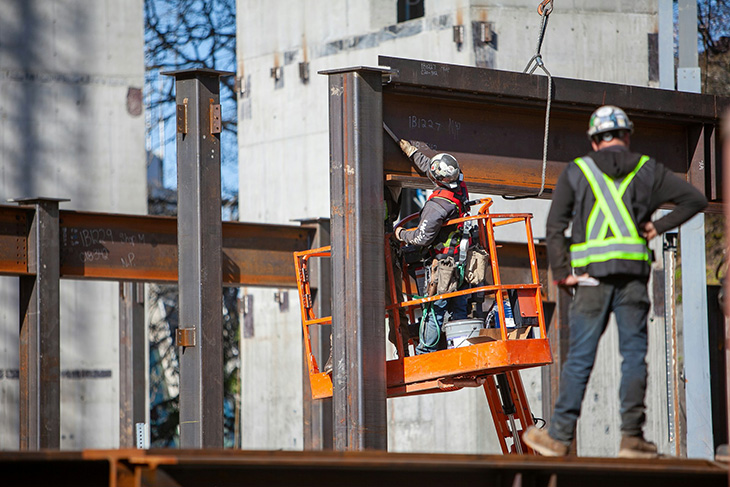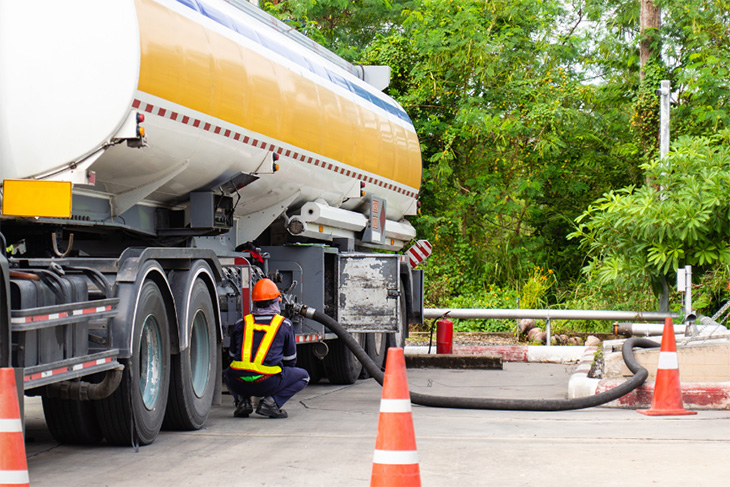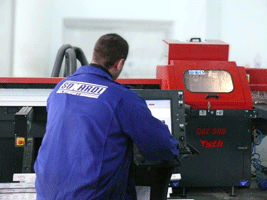Warehouses are inherently dangerous, and people need specialized training to work in them safely. Additionally, leaders should invest in connected worker technology solutions to reduce accidents and minimize their effects.
High-Tech Cameras Provide Better Visibility
Until recently, health and safety leaders primarily relied on manual methods and employee feedback to curb unsafe behaviors or other violations. Now, many companies specialize in artificial intelligence (AI) algorithms that process massive amounts of data and allow users to see the happenings around various parts of a warehouse at once.
These solutions continuously scan the surroundings, classifying the captured content as safe or potentially dangerous and requiring further investigation. However, flagging unsafe incidents when they happen is not necessarily sufficient. Leaders must also know what triggered AI cameras to notify them of problems. One option takes images and 12-second videos of unsafe actions and then sends real-time alerts to supervisors.
Such technologies let people see more than they could if doing periodic checks throughout various warehouse areas. Dangerous situations can unfold in seconds, making supervisors unlikely to be within viewing distance when they occur. Imagine the convenience of a camera system that detected issues and automatically gave relevant feedback to workers, preventing managers from needing to intervene. Some AI camera systems also detect fallen workers or potential fires, reducing the chances of emergencies going unnoticed and getting out of control.
Executives could also use AI cameras to determine the best ways to support safety and protect their profits simultaneously. For example, up to 40% of food spoilage occurs between production and retail environments. Changing a warehouse’s layout to increase the accessibility of products with the shortest shelf lives increases the likelihood of them staying fresh until after customers buy them. Relatedly, making those items easy for workers to reach could reduce strains, sprains and unhealthy body positions.
Wearables Warn of Unsafe Movements
Advances in connected worker technology facilitate better trend-tracking and goal-setting measures. Once executives understand the biggest safety issues in their warehouses, they can create dedicated plans to remedy those shortcomings.
In one example, a snack food brand’s leaders wanted to reduce injuries in its distribution centers and manufacturing plants. The decision-makers had already tried several things, such as conducting workplace risk analyses, getting advice from athletic trainers and providing posture training. Those measures encouraged workers to modify their movements but didn’t cause lasting behavioral changes.
The previous experiences drove executives’ interest in a belt-worn wearable that vibrated whenever workers made ergonomically incorrect movements. The devices also connected to an app that offered gamification, goal-setting capabilities and on-screen alerts, enabling users to connect the tactile feedback to other data.
After a five-month trial, employees had 72% fewer unsafe postures, which prompted leaders to approve a wider rollout. Then, data from nine facilities confirmed a 19% reduction in strains and sprains compared to before the company used the technology.
The United States’ workforce includes almost 1.2 million people with warehouse and storage jobs. Those employees play essential roles in preparing goods for shipments or retail distribution. However, injuries can significantly reduce productivity. Wearables that provide instant, noticeable feedback urge people to make quick, valuable corrections.
These technologies also align with a national emphasis program announced by the Occupational Safety and Health Administration in 2023. This three-year initiative aims to reduce workplace hazards in warehouses and other high-risk environments. Regulators will comprehensively check selected facilities for unaddressed risks, including ergonomic hazards.
Connected Worker Technology Assigns Safety Scores
Although it is undoubtedly helpful for people to get feedback once unsafe actions happen, some products respond more proactively. One involves a sensor that clips to a person’s hip or rests between their shoulder blades.
It collects data 12.5 times per second, analyzing the wearer’s torso movements. The device compiles the information to provide a safety score. Users get prompts to stop before continuing their tasks if their scores drop below defined thresholds. Additionally, people receive visual or vibrational cues when entering unsafe ranges of motion.
At the end of each user’s workday, the information from their wearable goes to the cloud, allowing managers to retrieve it and analyze the findings with a proprietary algorithm. They get results at the individual and organizational levels and can use that data to determine the most prominent risks or how to make lasting improvements.
Supervisors can also see whether a worker’s safety score decreases over time. Such instances could indicate the person needs additional training or other interventions. Most importantly, the data justifies scheduling meetings with an individual to learn more about the likely reasons for the change. Perhaps things going on in the worker’s personal life have distracted them, or the person has let safety slide while trying to learn a complicated new warehouse process.
Data from connected worker technology products gives executives the confidence to take decisive action rather than relying on assumptions or guesswork. Seeing evidence of ongoing safety violations and reacting to improve those issues allows leaders to maintain safer workplaces. Succeeding in that goal can also enhance employee retention by proving to workers that their well-being is an enduring priority.
Technology Improves Warehouse Outcomes
People interested in using connected worker technology should consider their most important goals, how much they can afford to spend and the number of people working in their warehouses. Determining the answers to those questions is the first step in creating a thoughtful plan to integrate well-chosen tech products into workflows, leading to productive outcomes with fewer dangers.
























